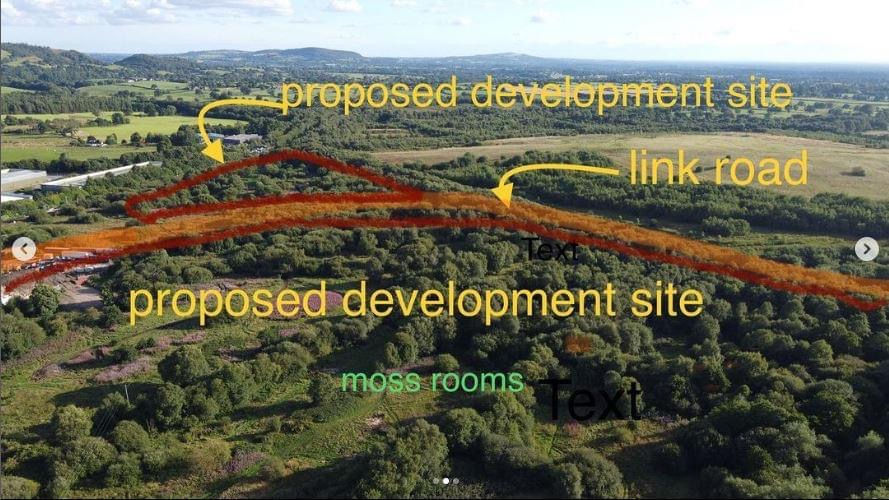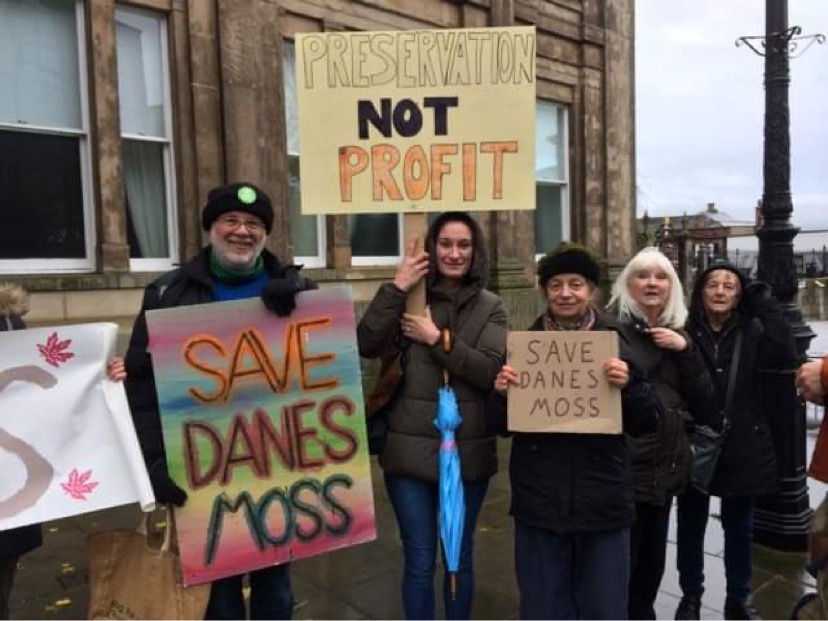Save Danes Moss Protest 23/11/22
- Lisa Miller
- Nov 23, 2022
- 4 min read



23/11/22
Today 37 residents from
Macclesfield, Congleton and surrounding areas joined together outside Macclesfield Town Hall as a show of strength to Cheshire East Borough Councillors meeting on the inside. Last week we all heard from the UN at Cop 27 ‘we are headed for climate catastrophe, with our foot on the accelerator’
Yet, here we are in Cheshire East….
Cheshire East Council, who are part-landowners of the site, want to build 950 homes and a link road on the edge of the Danes Moss Nature Reserve. Most of the site is owned by Cheshire East Council – about 53.6% of the land or 29.54 hectares. The rest is owned by a private developer.
Although this is not happening in Congleton, it was important for me to attend to show my support, because climate change does not recognise borders, it affects us all.
No decision making on Danes Moss was being made today, but, the persons making the decisions were in attendance.
The peaceful protest demonstrates the strong sense of feeling from residents- we do not want Danes moss developed. Cheshire wildlife trust have described it as ‘One of the most environmentally damaging schemes ever proposed in Cheshire East and the likely destruction of natural capital (biodiversity and stored carbon) at this scale is unprecedented in recent decades within the Cheshire region.’
Why is Danes Moss so special?
The Danes Moss site is 55ha of peatland here in Cheshire East that contains over 220.000 tonnes of CO2.
Peatlands are the largest natural store of carbon on land. Failing to protect peatlands results in them emitting greenhouse gases instead of being valuable, natural carbon-storing habitats. The Climate Change Committee has recommended that 79% of peatlands be restored by 2050 in order to contribute to achieving net-zero. Destroying this peatland site will make it a significant carbon source and drive on the climate emergency.
The SSSI (site of special scientific interest) inhabits a wide variety of butterflies. 24 species out of 27 species known to breed in Cheshire have been recorded across the whole Moss so far which makes it a biodiversity hotspot for them in Cheshire East. As well as birds Dane’s moss inhabits many different birds. Some are resident all year. Others visit in the summer or winter and others just drop in as an important stop to refuel while on migration. Recent records list 99 species across the whole Moss.
55 are on the UK Redlist with 21 at Red status and 34 at Amber status
9 are Section 41 listed ( Section 41 listed means they are a species of principal importance and are legally required to be considered within any new development.)
‘Red’ status ‘Red List’ birds are of highest conservation concern because of severe declines which means they are moving towards extinction in the UK.
The ‘Red’ listed Willow Tit inhabits the area, Dane’s moss is the nearest area to Congleton for bird watchers to see this gem. Due to constraints in its breeding (it only builds nests in dead trees) as well as constraints in its migration (it will not travel across open land) this makes it unlikely that the willow tits can survive the impact of such a huge development.
Yet, we see once again, extraordinarily limited protections for our precious wildlife. Legislation removed by our present government without second thought.
Cheshire East are already projected to be above housing targets without the Danes Moss development. Further development on Danes Moss is not required for the Macclesfield Local Plan housing targets to be met. The housing target for Macclesfield in the Local Plan was 4250 houses by 2030. Macclesfield is on course to reach 5600+ houses by 2030. There is no justification at all for developing houses on Danes Moss.
Therefore, it would be done purely based on profits, estimated to be £18 million for CEC. I would suggest this is a pretty radical plan for a council that has declared a climate emergency as declared it would be carbon neutral by 2025, a wild boast even. The environmental costs far exceed any monetary profits.
It has been argued that the development of Danes Moss will not have an effect on the SSSI area of the reserve. The truth is the effect of the proposed housing development on the integrity and function of the local SSSI is unknown and a genuine concern. The most direct likely impacts are through causing alterations in the flow, level and chemistry of water, the prime factors governing the unique properties of a raised bog. Natural England have said ‘Natural England is of the view that the environmental significance of this development site has not been fully recognised’.
If there is one thing that strikes me over this, it’s the fact that no matter your background, age, religion, one thing unites us all- we are fed up of the destruction of nature and fed up at our leaders apparent indifference to the climate changes warnings we are seeing more and more across the globe.
Cheshire Wildlife Trust are holding a consultation an alternative for the Danes Moss site. Head over to this site to register your opinion of what a wonderful alternative we could all enjoy.






Comments